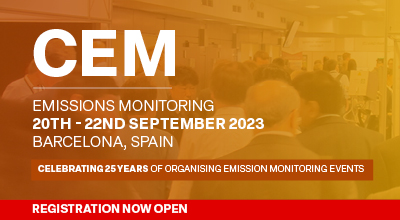| Abstract Title: | Does remain the performance of the HCl standardized reference method suitable in a context of lowering emission limit values? |
| Presenter Name: | Ms Cécile RAVENTOS |
| Co-authors: | Mrs FRABOULET Isaline |
| Company/Organisation: | INERIS (Institut National de l'Environnement Industriel et des Risques) |
| Country: | France |
Abstract Information :
The lowering of emission limit values and therefore emitted concentrations, with the revision of the BREFs (Best Available Techniques Reference documents), raises questions about the suitability of standardized reference methods to check compliance with atmospheric emission limit values (ELVs) of industrial installations and to calibrate the measurement systems used for continuous monitoring with an appropriate level of performance. One of the objectives of the Heroes project (supported by EMPIR program, carried out in partnership with CMI(a), EA(b), NPL(c), VTT(d)), was to evaluate the ability of the reference method applied for the periodic measurement of HCl to meet the uncertainty criterion defined in the standard, for low concentration levels, and to identify if necessary, the recommendations or requirements to be included when revising the measurement method to improve its performance of the method to reduce uncertainties. The measurement uncertainty can be estimated using two complementary approaches: - According to a calculation approach as described in the "Guide to the expression of uncertainty" (ISO/IEC Guide 98/3): evaluation based on the uncertainty due the parameters influencing the measurement, and in the case of HCl, combining the uncertainty due to the sampling step and the contribution associated with the analysis provided by the analytical laboratory - According to an interlaboratory comparison (ILC) approach, in which several laboratories perform the method simultaneously and on the same matrix, with two sampling systems. The expanded uncertainty is assessed by calculating the half confidence intervals of reproducibility. Ineris organised an ILC on its test bench to test the ability of the method to measure future ELVs with an acceptable uncertainty, and to assess the contributions of sampling and analysis to the repeatability of the measurement. The half confidence intervals were compared to the laboratory uncertainties provided by the laboratories using a calculation approach. Nine laboratories accredited for measurement according to EN 1911 participated in the ILC. The matrix was generated by means of a boiler, the emitted gases of which were spiked with HCl to cover an HCl concentration of 2.4 to 12.9 mg.m-3 at 273.15 K / 101325 Pa/dry during the 15 trials, and with interferents or substances that could impact the measurement, such as water vapor, SO2, NH3. The results made it possible to detect the significant effect of the temperature of the sampling system on the result, to assess the potential variability within and between laboratories, to analyse the sources of discrepancies between the assessment of uncertainty according to the approach considered (calculation or ILC), to identify provisions that could be introduced to improve the assessment of measurement uncertainty and to adapt the uncertainty criterion to low concentration levels. ((a): Czech Metrology Institute, (b): Environment Agency – UK, (c): National Physical Laboratory – UK, (d): Technical Research Centre of Finland)

